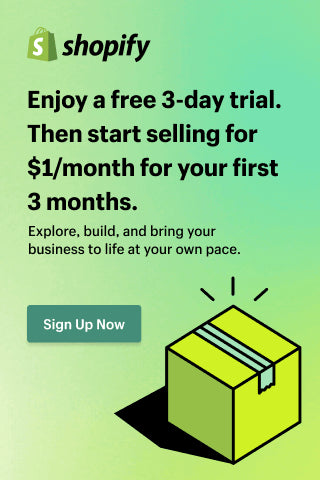Practical Shopify Checkout Add-Ons You Can Build Fast
Shopify’s Checkout Extensibility framework has quietly become one of the most powerful tools for merchants in 2025. It lets you customize checkout — once a locked box — with approved, upgrade-safe extensions that improve customer experience without breaking updates or performance.
But here’s the good news: you don’t need a developer team or weeks of QA to take advantage of it. With today’s APIs, no-code tools, and prebuilt app blocks, you can ship meaningful checkout improvements in a single day.
This article explores what Checkout Extensibility is, why it matters, and five practical add-ons you can implement right away to enhance conversion, trust, and upsell potential.
What Checkout Extensibility Actually Means
In older Shopify setups, merchants who wanted custom checkout experiences had to rely on checkout.liquid — a fragile template that required code changes and often broke during updates. It was powerful but risky, especially for non-technical teams.
Checkout Extensibility replaces that with a modern, modular system built on Shopify’s new Checkout UI Extensions API and Shopify Functions. These extensions run in isolated blocks that:
-
Work securely within Shopify’s native checkout
-
Stay compatible with future updates
-
Require no full-page custom code edits
-
Can be added, removed, or rearranged directly in the Checkout Editor
In short: Shopify finally gives you flexibility without fragility.
If you’re still using checkout.liquid, Shopify recommends migrating soon — as it’s being phased out for most merchants. But even if you’re already on Extensibility, chances are you’re not yet taking full advantage of what it can do.
Why Checkout Customization Matters
Checkout is where buying intent either converts or dies. Every unnecessary click, every unaddressed doubt, every unclear step is friction. And friction costs sales.

Small improvements — reassurance badges, prefilled fields, or optional upsells — can lift conversion rates by several percentage points.
But the goal isn’t just to make checkout look nicer. It’s to make it simpler, faster, and more trustworthy. Extensibility helps you do that while staying compliant with Shopify’s performance standards.
Add-On #1: Dynamic Shipping Messages
One of the quickest wins you can implement is real-time shipping logic. Using Shopify Functions and a small UI extension, you can display contextual messages like:
“Order within 3 hours to get delivery by Friday.”
“You’re $12 away from free shipping.”
These prompts reduce uncertainty and nudge higher order values. They’re easy to configure because they pull live data — cart total, region, or shipping rate — and update instantly as customers interact.
Time to implement: ~3 hours
Tools: Shopify Functions + Checkout UI Extensions SDK
Outcome: Higher AOV, reduced cart abandonment
Add-On #2: Trust and Guarantee Blocks
Trust is a huge factor at checkout. Adding a small, visual reassurance section near the payment area can reduce hesitation.
Common examples include:
-
“30-day free returns”
-
“Secure payment via Shopify Payments”
-
“Carbon-neutral delivery included”
These are not static badges; they’re modular blocks that you can edit in the Checkout Editor — no custom code required. Shopify’s official UI components (like Banner, Text, and Icon) make these blocks consistent with your checkout design.
Time to implement: 1–2 hours
Tools: Checkout UI Extensions Editor or prebuilt app block
Outcome: Improved completion rate, especially for first-time customers
Add-On #3: Smart Order Notes or Gift Messages
Want to make checkout feel more personal? Add a lightweight extension that allows buyers to include gift notes or customization requests.
For example:
-
“Write a short message to include with your order.”
-
“Add monogram initials (optional).”
With Extensibility, these notes sync directly into the order’s metafields — no manual entry or theme editing required. You can also configure visibility so only relevant products or cart totals trigger the field.
Time to implement: 2–3 hours
Tools: Shopify UI Extensions + Metafields
Outcome: Better personalization and smoother operations for custom products
Add-On #4: One-Click Post-Purchase Upsell
Shopify’s post-purchase extension points allow you to show upsells right after payment, before the confirmation page.
Instead of redirecting customers elsewhere, you can display a simple, context-aware offer like:
“Add matching socks for 20% off — ships free with your order.”
This extension runs natively within Shopify’s checkout flow, meaning it’s fast, secure, and compliant with Shopify Payments. Merchants report conversion rates between 7–12% on post-purchase offers — and setup can be done in half a day using apps like ReConvert or by coding a small UI block.
Time to implement: 3–4 hours
Tools: Post-purchase Checkout Extension API
Outcome: Higher AOV without disrupting checkout flow
Add-On #5: Loyalty & Rewards Integration
For stores with active loyalty programs, checkout is a perfect place to reinforce value. Using an extension, you can display:
-
Current reward balance (“You have 120 points available”)
-
Redeemable options (“Apply $5 off using your points”)
-
Progress trackers (“You’re 200 points away from your next reward”)
Most popular loyalty apps now support Checkout Extensibility, meaning you can integrate seamlessly without affecting performance or analytics.
Time to implement: 2–3 hours (via supported app)
Tools: Loyalty app with Checkout UI Extension support
Outcome: Improved retention and repeat purchase rate
Add-On #6: Localized Payment and Message Blocks
For global stores, showing the right payment methods and messages by region can increase trust dramatically.
Using Shopify Functions and country detection, you can conditionally show local payment badges or tailored messages such as:
“We now accept Klarna for EU orders.”
“Pay with GCash for faster processing.”
This is particularly effective for stores expanding internationally — it creates instant familiarity and reduces friction at the decision moment.
Time to implement: 3–5 hours
Tools: Functions + Checkout UI Extension
Outcome: Increased international conversion rate and reduced payment drop-off
Add-On #7: Custom Banner for Limited-Time Offers
Urgency, when done authentically, works. Adding a small banner near the checkout header with a live countdown or time-limited offer can boost conversion in campaigns.
For example:
“Flash Sale: 10% off ends in 02:15:27.”
This block can be tied to specific discount codes or cart conditions. You can also trigger it only for users arriving from specific landing pages or campaigns, making it ideal for flash promotions without rewriting theme code.
Time to implement: 2–4 hours
Tools: Shopify UI Extensions SDK + condition logic
Outcome: Lift in same-session conversion during promotions
Why “Ship in a Day” Isn’t a Stretch
Most of these add-ons share a common pattern: they rely on Shopify’s modular block system, meaning you don’t touch checkout code directly. Instead, you plug into existing APIs and functions.

Here’s how to approach fast implementation:
-
Plan the outcome, not the feature.
Decide what measurable goal you want — higher AOV, lower abandonment, or more trust. -
Pick one extension point.
Shopify offers multiple: delivery methods, payment, post-purchase, order confirmation, etc. Focus on one first. -
Use Shopify’s Developer Docs or App Templates.
The Checkout UI Extensions Starter template lets you scaffold a working extension in minutes. -
Test in a development store.
The Checkout Editor preview shows changes instantly, ensuring your checkout remains stable and consistent.
The real magic of Checkout Extensibility is its speed of iteration. You can build, test, and deploy micro-improvements in hours — without waiting for major redesigns or risking compatibility issues.
Lessons from Merchants Who Adopted Early
Merchants who moved early to Checkout Extensibility report consistent themes:
-
Cleaner codebase, fewer bugs: Updates no longer break checkout.
-
Faster marketing experiments: Promotions or upsells can be added instantly.
-
Improved analytics: Extensions provide clearer event tracking than legacy edits.
-
Higher checkout completion rates: Small, context-aware UX touches make big differences.
The transition isn’t just about flexibility — it’s about building a checkout that evolves with your business.
Getting Started
If you’re new to Checkout Extensibility, here’s a quick roadmap:
-
Go to Settings → Checkout → Customize in your Shopify Admin.
-
Use the Checkout Editor to explore existing extension points.
-
Browse the Shopify App Store for prebuilt checkout apps that support Extensibility.
-
If you have a developer, explore Shopify CLI for custom UI Extensions.
-
Test in a sandbox environment before publishing live.
Even one or two well-placed blocks can meaningfully improve your checkout experience — and your bottom line — without disrupting your existing workflow.
Final Thoughts
Checkout Extensibility is more than a technical upgrade; it’s a mindset shift. It lets brands stop treating checkout as a static, locked page and start treating it as a living, testable part of the customer journey.
You don’t need a full redesign or a custom app to see impact. Start small. Add a trust block, a shipping message, or a post-purchase upsell. Ship it in a day, measure the results, and iterate.
Shopify built this system so merchants could move faster — not wait for developers to rewrite templates. The brands that use it best aren’t necessarily the biggest; they’re the ones that treat checkout like a product in itself.
And once you see that first bump in conversion from a simple, well-placed extension, you’ll understand what the future of Shopify checkout really looks like: modular, measurable, and always improving.
Install Shopify and start doing online business
This post may contain affiliate links. If you purchase through these links, we may earn a commission at no additional cost to you.



